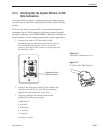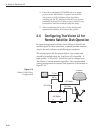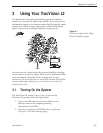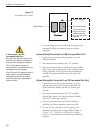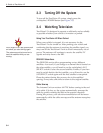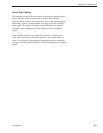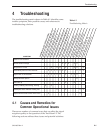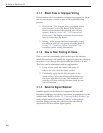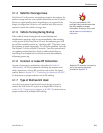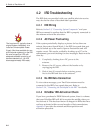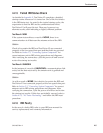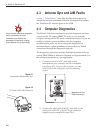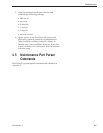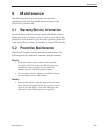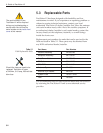
4.1.1 Blown Fuse or Improper Wiring
If the antenna unit is installed but entirely non-responsive, there
are two key factors to check as part of the troubleshooting
process:
1. Blown Fuse – The antenna unit is equipped with a
fuse mounted on its CPU Board. If this fuse has
blown or been broken, the antenna unit will not
operate. Refer to Section 5.4.1, “PCB Removal and
Replacement,” for details on the fuse location and
how to access the CPU Board.
2. Wiring – If the system has been improperly wired,
the antenna unit will not operate correctly. Refer to
Section 2.3, “Connecting System Components” for
complete system wiring information.
4.1.2 Dew or Rain Pooling on Dome
Dew or rain can occasionally pool on the top of the radome.
While this moisture will usually be dispersed when the vehicle is
in motion, it can disrupt the signal while the vehicle is at rest.
This issue can be minimized with two approaches:
1. Using a hose, spray the dome with water to
remove the dew from the dome surface.
2. Periodically apply liquid dish detergent to the
dome surface. Wipe the full-strength detergent on
the dome and allow it to dry. This treatment will
provide a fil2 that will help moisture bead up and
roll off the dome.
4.1.3 Satellite Signal Blocked
Satellite signals can be blocked or degraded by trees and
branches, buildings, overpasses, mountains, or equipment on the
vehicle itself. Refer to Section 2.1, “Choosing the Best Location,” to
make certain that the TracVision L2 unit is in the optimal
location. Simply moving the vehicle to clear an external
obstruction will also restore signal quality.
4-2
A Guide to TracVision L2



